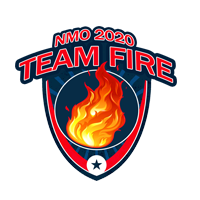
Announcement
QUARTER FINAL | BUSINESS CASE - BCS 04
Business Adviser 2 Submission BCS 04
NMO 2020
In a business environment where reputational pressure lurks around every corner, a strong culture of ethics and compliance is the foundation of a robust risk management program.
Submission Date & Time : 2020-03-22 07:02:07
Submitted By: Tanya - Business Adviser 2 From Team Fire
Case UnderstandingAs a business advisor, seeking throughout the challenges and problems that DND is facing, perception of non-effective business lies more towards non-cooperation of the business staff and non-clarity of business objectives, overlooking of human resource and personnel requirements, non- adherence to business principles and non-fulfillment of customer requirements and non-adherence to marketing principles. Sluggish attitude of employees have shown non-satisfactory nature of all employees and sales persons, departmental heads are not accountable to their respective heads, lack of integration of various departments and overlooking of common objectives. Deterioration of inventory reflects inventory purchases and storage inventory are not accurately estimated. Initiatives regarding demand forecasting are not taken. Non- accountability of business managers and overlooking of business objectives shows absence of proper governance framework, rules and regulations. A culture is a unit which integrates all the values and sub-culture, groups and human resource under one umbrella to cooperate with each other and unites their efforts in achieving one common goal. Due to lacking of proper rules and regulations. The social-system focus is on the condition involved in the interaction of actual human individuals who constitute concrete collectivities with determinate membership. The cultural-system focus on the other hand, is on the patterns of meaning e.g. of values, of norms of organized knowledge and beliefs of expressive form. Attitudes and perception of employees towards business objectives are not parallel with the vision of the organization. Cultural concepts of ideation kind shift considerably the nature of the emphasis of the enquiry into organizational culture. Culture is the made up of the cultural – bearers ‘theories of the world’ and symbolic products. Culture is a dynamic, symbol –laden context, a set of functional cognitions or a deep, unconscious structure of mind. Culture is best seen not as complexes of creative behavior patterns –customs , usages, traditions, habit centers-as hat , by and large been the case up to now , but as a set of control mechanisms.
BCS Solution SummaryIt has been proposed that diverse and complex business organization may be characterized by particular assumptions, slants and emphases. Business organization is the complex structures which require backward support from various profounder of theories of business culture. A culture should be formed in the organization that supports all the requirements and integrates all the dimensions of the organization towards achievement of the common objective. A culture should be formed in which leadership accomplishments are accepted by the operating staff and must be effective in their own ways to unite all the staff to operate in a common direction. Culture is one of the biggest determinants of how employees behave. Strong culture has two common elements, there is a high level of agreement about what is valued, and a high level of intensity with regard to those values. When it comes in developing world-class ethics and compliance programs, the starting point is appositive culture of integrity. Business organization should have well – defined procedures for maintaining harmony, informal relations and self belonging amongst the employees. The principle of “spirit-de-corpse†is applicable given by Henry Fayol. To maintain greater amount of accountability and transparency, a systematic framework and procedures are required, for this “Full disclosure†principle is applicable to make employees informed about various decisions made, so that proper action is taken by them. Employees are most important asset for any organization; they are the foundation for the culture of any organization. Prominent roles are played by employees in culture development of the organization, as people belonging to different cultures integrates under one roof , the most prominent responsibility lies towards Human resource department to manage people efficiently. Fulfillment of requirements and needs of the employees are utmost important for the organization, for this “remuneration†principle is applicable given by Henry Fayol. Employees need motivation to work in the organization; incentives like monetary as well as non-monetary should be to boost their confidence and morale of the employees. According to the ‘Herzberg theory’, presence of needs satisfiers does not encourage motivation but absence of them creates dissatisfaction. Hence, employees and sales persons should get more than what they are obliged to get. Non-monetary incentives would act as a driver to increase efficiency among them. For the growth of the organization, collaborations and ventures are required to be done with the known brands to outsource technologies and expertise. Culture is one of the biggest stumbling blocks in integrating a merged or acquired organization, in fact, it is one of the reason such transaction fail. Collaboration requires two companies to put forward their efforts to achieve a common goal. Hence, it is utmost carefulness require to adopt different cultures of
Solution
A culture requires a regular regulatory focus on fostering an ethics and culture, many organization are conducting assessments leveraging internal/external resources to review their overall programs to ensure both ethics and compliance are addressed. Here are some of the grounding principles of integrity generally characterized by:-
- Organizational values – a set of clear values that , among other things emphasizes the organization’s commitment to legal and regulatory compliance , integrity and business ethics.
- Tone at the top – executive leadership and senior managers across the organization encourage employees and business partners to behave legally and ethically, and in accordance with compliance and policy requirements.
- Consistent communication- operational directives and business imperatives align with the messages from leadership related to ethics and compliance.
- Middle managers who carry the banner – front line and mid level supervisors turn principles into practice. They often use the power of stories and symbols to promote ethical behaviors.
- Confront speaking up- employees across the organization are comfortable coming forward with legal, compliance and ethics and concerns without fear of retaliation.
- Accountability – senior leaders hold themselves and those reporting to them accountable for complying with regulations and organization policy as well as shared organizational values.
- The hire-retire life cycle- the organization recruits and screens employees based on character as well as competence. The on- boarding steps new employees in the organizational values. Employees are well treated when they leave or retire creating colleagues for life.
- Incentives and rewards- the organization rewards and promotes people based in part, on their adherence to ethical values. It is not only clear that good behavior is rewarded, but the bad behavior can have negative consequences.
- Procedural justice- internal matters are adjudicated equitable at all the levels of the organization. Employees may not always agree with the decisions, but they will accept them if they believe a process has been administered.
As per DND case, due to improper strengthening of rules and regulations, improper functioning of business and absence of conceptual framework drives the follow up of above mentioned principles in the organization.
- Participative behavior of employees
Employees play a prominent role in achievement of vision and mission of the organization. Hence, they require the environment which satisfies their status and power needs. They should be provided with the Decision making authority, to make decision related to their area of work. ‘MANAGEMENT BY OBJECTIVE’ (MBO) should be followed , involving salespersons and corporate employees of the distribution network in the decision making, deciding which area should they target, analyzing greater demand areas, their own requirements for distribution.
- Regular interaction with workforce
Regular interaction with the workforce or gaining feedback from them on the monthly basis provides an edge in estimating what are the needs and requirements of the employees and sales person in the company. On the basis of feedback, regular meetings should be conducted with employees of distribution firm, to interact on one-one basis.
- Maintenance work life balance
Employees require professional as well as personal satisfaction I their lives. Personal life balances are also that much of importance as are professional balances.
Work life balance plays a very important role in retention of employees and maintaining job satisfaction. Even, if employees are not getting paid and they are able to easily manage person lives, work life balance takes an edge over monetary benefits.
Corporate employees as well as sales persons should be able to manage their home. It increases efficiency of the employee and reduces work pressures.
- Effective redressed system of complains and procedural systems
A redressed framework is required to immediate redress the issues and complaints of all the staff in the organization.
Redressed system forms a cooperative culture in the organization, providing immediate attention to the issues faced by staff increase the job satisfaction. Adhering to the adhocracy culture forms a cooperative ethos and creates a sense of belongingness in the organization.
- Instilling culture and values throughout the organization
While executive leadership may work hard to establish a culture of integrity at headquarters, something often gets lost in translation as one move further away from the central office.
This is why attention to culture needs to be active and continuous, especially in large organization with distant outposts.
Values with ethics and integrity at their core-must clearly and consistently communicated. Communications needs to be explicit and repeated, so that it becomes embedded in how works gets done. Communicating culture can be especially challenging when crossing borders.
It is important that everyone understands the expected behaviors of the organization and the principles against which decisions will be made. Values need to be articulated in a manner that transcends nationality -for example, the concepts of honesty and trustworthiness are universally acknowledged.
Nevertheless , it s important to recognize the cultural difference will influence how messages are heard and interpreted , and adjustments may need to be made in training employee on boarding, and performance reviews.
- Handling of the malcontents.
When the people are out of the way for supporting the culture and undermine the organizational objectives. Those people must be identified, counseled, and offered the opportunity to conform to expected behavior, or they should be separated from the organization.
Training programs focusing on ethics and compliance should be communicated to the individuals who may need additional reinforcements.
As a next step, performance reviews should be structured to include an evaluation of an individual’s results reflect how these results were achieved. Some of the organization even makes adhering to values part of the goal-planning process by setting objectives that are tied to specific cultural elements.
- Addressing leadership flux
Right individuals for the organization should be selected. Candidates who are not only competent, but who have the chemistry, character, and moral capability to inspire and win the hearts and minds of all the stakeholders. It is important for the culture no to be dependent on a single person or group. A robust compliance and ethics program should be designed, positioned and resourced will survive executive changes at the top of the organization.
Optional Assignment
ConclusionA culture in an organization is personified as an umbrella, which integrates all the efforts, unites people from different departments and are branded together to achieve common objectives. When people work towards common objectives, success follows, and when people are out of way to follow culture, failure follows. Building culture not only fortifies organization against risk, but also develops strong loyalty and commitment to work. A positive culture in the long run, creates a ethical and compliance network in the organization which helps to grow the near future and build strong interrelationships.
Attached File Details
Comments

Dr Saroj Kumar Dutta
Good Effort ..better articulation needed next time.

Varun Viduhi
Good try Solutions to case are effective but not explained in depth
Participant
Tanya
Delhi School Of Economics
I aspire to be an apprehensive leader in the corporate world. Management is my passion and learning and discipline are my souls.
Team Earth BCS 04 Submission
Total Team Points: 79980
Team Fire BCS 04 Submission
Total Team Points: 84915
Team Water BCS 04 Submission
Total Team Points: 59255
Team Sky BCS 04 Submission
Total Team Points: 106350
Team Air BCS 04 Submission
Total Team Points: 90750







































